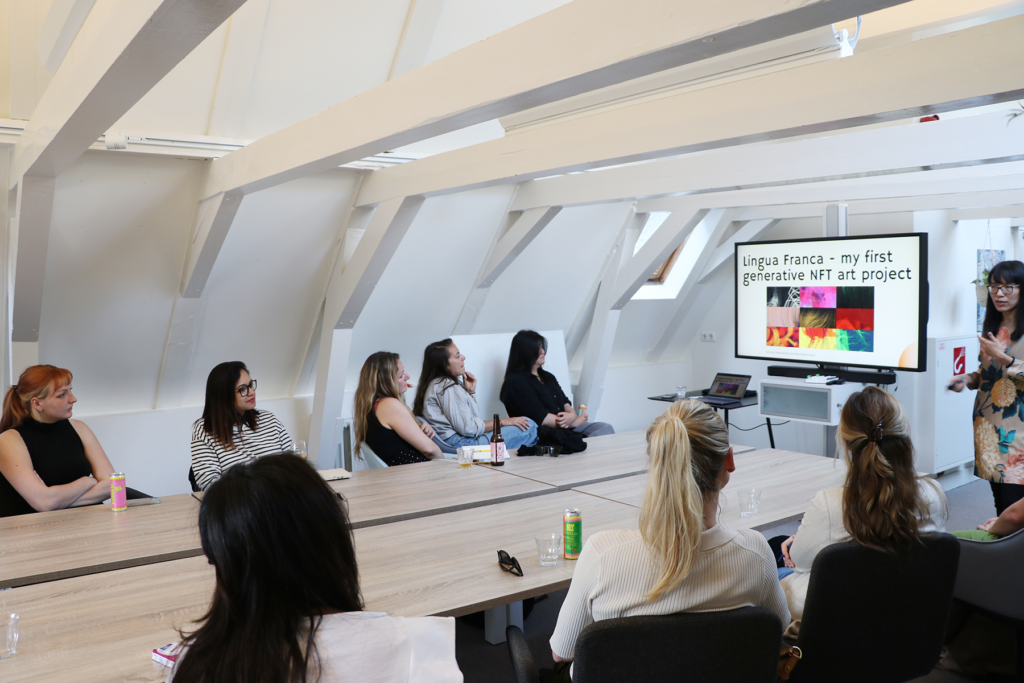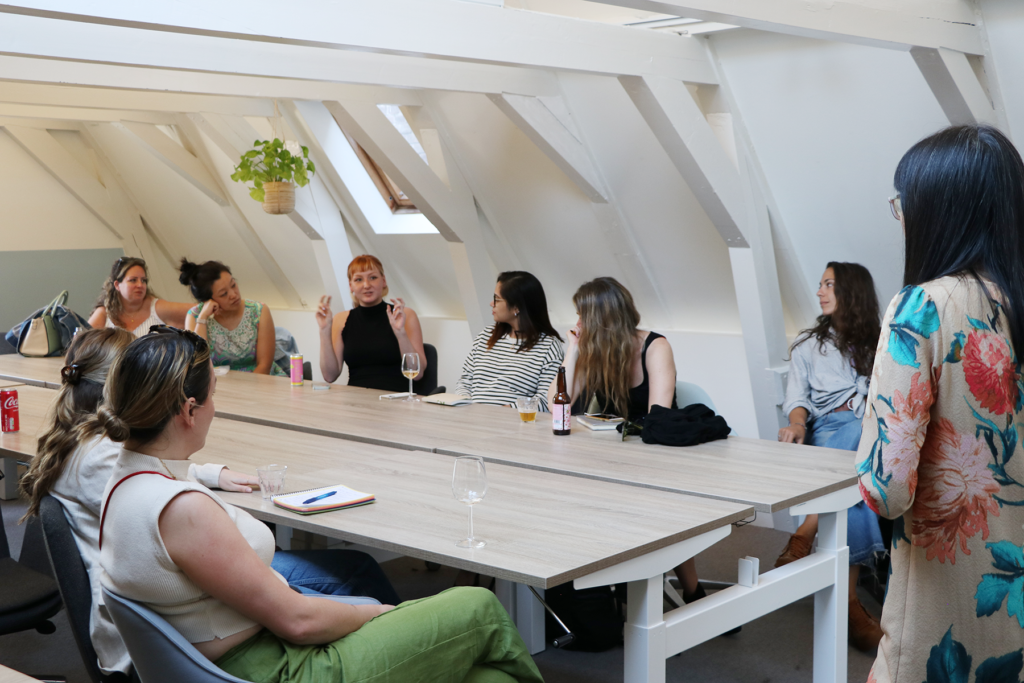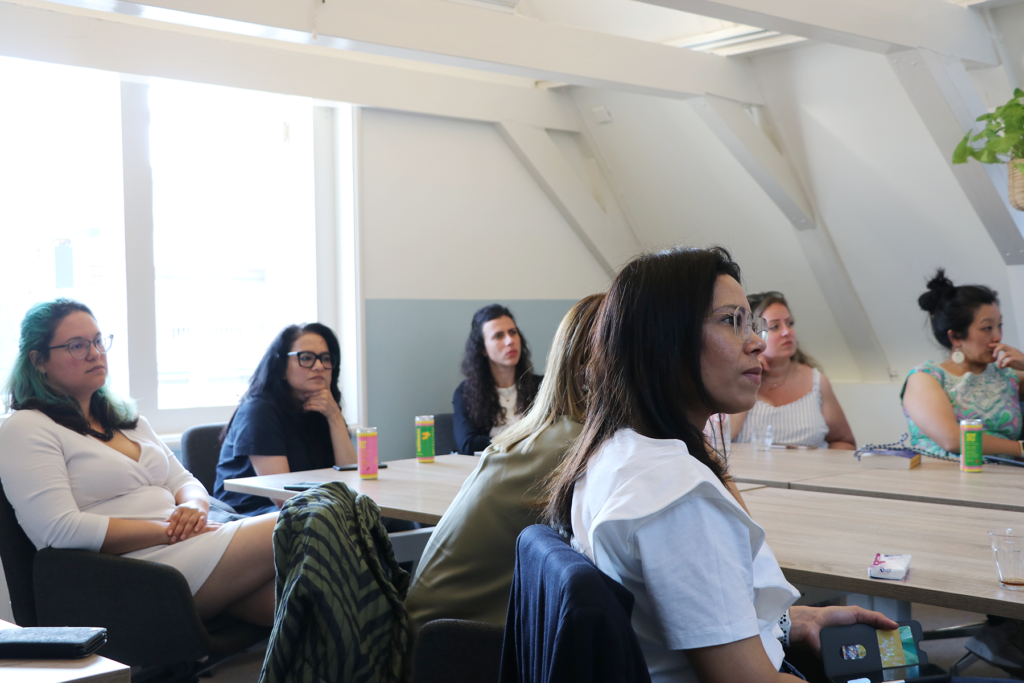
Combining AI with creativity and the role blockchain technology can have
At our WAI Circle event of June our community was given the opportunity to hear from Sunny Jiang about how innovation and creativity can thrive within the field of AI. Sunny is founder of MaasVentures, MaasValley (blockchain for impact) and MaasDAO (Art Tech DAO). At our WAI Circle, she talked about creating art with data and shared some amazing examples. We also took a deep dive in NFT’s and the way blockchain technology can benefit generative AI.
Author: Ingrid van Heuven van Staereling.

Traditional and generative AI
Sunny explains the way AI is created and what makes is so useful. “Traditionally, AI has been centered around algorithms, utilizing data to build predictive models.” We can see applications used within various industries, from healthcare to logistics. The rate of mass adoption is unprecedented. Startups, in particular, have embraced AI. They are cleverly leveraging its interactive nature to drive innovation. Generative AI models are designed to interact with humans. And they are leading to profound impacts across the industry. “With AI, we can automate numerous processes.” AI’s potential is far-reaching, enabling us to address critical issues. With it we are even able to monitor emissions and CO2 levels, giving us the opportunity to intervene when needed. Furthermore, the creation of bots equipped to analyze such data exemplifies the transformative power of AI in tackling complex challenges.
Creativity and AI
“If we talk about creativity, we talk about imagination.” We use our eyes to see, but the power of imagination enables us to envision things in our minds. The next step in the use of new technology is aiming to create that type of intelligence in machines. The fusion of technology and art has given rise to various forms of expression, including programming art. Unlike traditional painting, digital and coding arts offer a unique way of creating artwork. Computer scientists have delved into the realm of generative arts, creating pieces of code that determine the appearance of the artwork. Sunny explains theres more involved than just visualizing with the help of data: “It may seem simple to define how art should look, but it requires programming to control the smooth movement of the visuals.” Algorithms can help with that. Generative arts, in particular, involve the creation of intricate pieces of code that determine the aesthetic of an artwork. Flow Field is an example of that. It was created by Tyler Hobbs. With a background as a computer scientist, artists like Tyler Hobbs delved into this realm, crafting artworks with the help of data.The result of his method is not just a single piece of art but a collection of a hundred distinct pieces, each born from the combination of creativity and AI.
Everything is about data, and deep learning techniques serve as the driving force behind some transformative art creations that were made. Refik Anadol, the most renowned AI artist globally, has created captivating experiences that leave a lasting impression. His work are not just visuals; they move and captivate with their colossal scale. “He is able to create the algorithms himself and works in collaboration with architects and data scientists.” Sunny explains what makes him unique: “One of his exceptional projects involved harnessing the data captured from the winds along the coast of Boston.” He transformed it into AI-spiring art! His big and dynamic installations embody movement, continually shifting and interacting with the data of their surroundings. Anadol’s artistry is highly regarded. He was commission to create a masterpiece for the World Economic Forum. Sunny mentions another thing that makes this artist special: “Through his art, he addresses issues like climate change.” He even utilized data derived from corals to shed light on the urgency to preserve it.

Artists and the rise of NFT’s
NFT arts, or non-fungible tokens, have emerged as a significant development in the world of digital creativity. Unlike fungible tokens, which are interchangeable, non-fungible tokens are unique and indivisible. “They are linked to a specific ID or address.” – Sunny explains. There are various standards for NFTs, each with its own set of rules and functionalities. “The artwork itself is represented as metadata. The artwork itself is not stored in the blockchain, it’s just the link.” Kind of like a house number. The actual house is not stored, but just the number of the house, its address. It is also allowed to change the metadata; it’s interactive. “If it’s raining outside, your NFT might be raining as well.” This innovation has opened up new possibilities for art ownership. “Owning a masterpiece may be financially out of reach for many, but NFT’s arent.” Examples like the Bored Ape Yacht Club have gained immense popularity. “But those are not exactly art, they are PFPs.” -Sunny mentions.

NFTs have been introduced as a new way for artists to monetize their artwork, revolutionizing the traditional art market. Unlike the traditional gallery system, which often charges significant fees to artists, NFTs operate with minimal transaction costs. “The majority of the proceeds go directly to the artist.” Additionally, NFTs have introduced the concept of royalty fees, allowing artists to earn ongoing revenue from their creations even after the initial sale. Traditional art sales offer no such royalties, so NFTs provide a mechanism to ensure artists benefit from subsequent sales as well. This shift has also accelerated the visibility and recognition of artists in ways that previously took years of hard work, exhibitions, and doing lots of interviews. “NFTs have created opportunities for artists to gain recognition quicker.” This is mainly because the NFT space is really community-driven.
Combining AI with blockchain
The power of community can help drive creativity in many ways. Creating a system that is independent and censorship resistant gives many people the opportunity to join in and even succeed. One way to do this is to use blockchain technology. “Blockchain operates by linking blocks together virtually, forming a chain that stores and secures data.” -Sunny explains. Each block within the chain serves a different function, holding basic yet crucial information. “However, you can’t use it as a storage unit. Each block is capable of holding only around 2 megabytes.” As a result, the creation of a blockchain can be costly, since you need to minimize the code to optimize efficiency.
“So the advantage of blockchain is that it is very transparent.” It operates based on simple principles of numbers and functions, relying on the fingerprint of data to identify the next block. Each block contains the fingerprint of the previous one, establishing the interconnectedness of the blockchain. All blocks are essential for the integrity of the chain. The organization of the blockchain system encourages participation from various computers, promoting decentralization and ensuring that no single entity has control. If one computer is removed, the data remains intact as every participant possesses a copy. This decentralized structure makes the system resistant to censorship. “It promotes inclusivity and allows anyone to join and contribute.”
By decentralizing the technology, blockchain ensures that data is never lost and provides an opportunity for everyone to access and utilize it. What if you use this technology with AI? What if, with this technology, generative AI is accessible to everyone? This would make it always available and people will be able to change it, giving it the possibility to evolve.

Sunny sees potential in combining AI with blockchain technology. “By combining the two technologies together, it will generate faster outcomes.” With AI’s ability to analyze and process information at a rapid pace, it might be able to enhance the scalability and performance of blockchain networks.